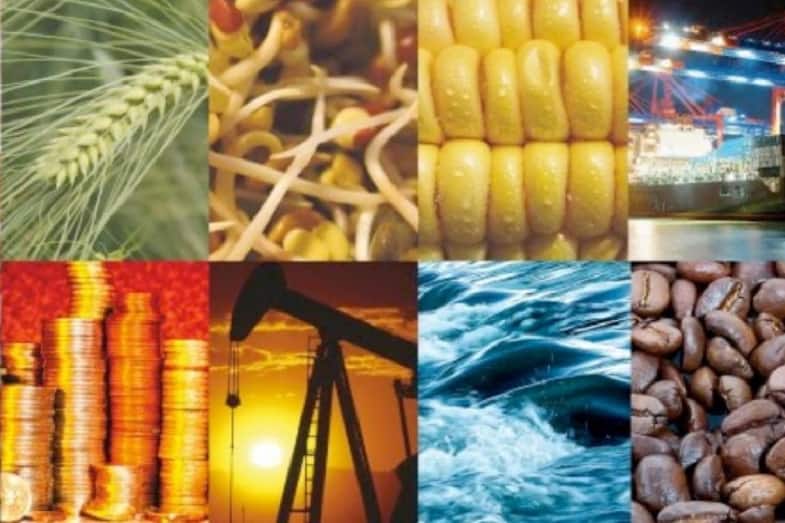What happens when the Fed cuts interest rates? The Fed may cut interest rates in circumstances when the government has to control inflation or gain economic stability. In this article, I’ll describe the ripple effect caused when the Fed cuts interest rates.
What happens when the interest rates get cut? When the Feds decrease interest rates, this encourages businesses and consumers to borrow and invest. This will boost economic growth. However, the interest cut must not be too low, as this could result in inflation.
The Federal Reserve System (Fed) is in charge of keeping the U.S. economy stable by cutting or raising interest rates. They benchmark a price that keeps the economy thriving and inflation in check and then use the data to control interest rates.
8 different events that happen when the Fed cuts interest rates are as follows:
- The Economy Grows
- Treasury Bonds’ Value Falls and General Bonds Rise
- Consumers Borrow More and Invest
- Prices of Commodities Become Lower
- Mortgage Rates Become Lower
- Car Loans Are Cheaper
- The Stock Market Goes Up
- The U.S. Dollar Loses Its Value
- Exchange Rates Decrease
Read on to learn more about what happens when the Fed cuts interest rates and how it affects consumer and business spending.
What Happens When the Fed Cuts Interest Rates?
Various things happen when the Fed cuts interest rates. There are pros and cons when this event occurs. Here are 8 different events that happen when the Fed cuts interest rates.
1. The Economy Grows
When the Fed cuts interest rates, it lowers the financing costs, encouraging consumers to borrow and invest. When interest rates are cut, prices remain low, so people can pay off their debts and save money.
But the interest rates must not be too low because the economy would be booming with increased demands for goods, which producers tend to raise prices. This action would lead to inflation, which devalues the currency and reduces the dollar’s buying power. In this case, the economy may turn even more sluggish and weak.
Thus, the Fed has to strike a balance of not being too low or too high. If this benchmark is maintained, it strengthens the nation’s economy.
2. Treasury Bonds’ Value Falls and General Bonds Rise
This impact happens when the Fed cuts back on short-term interest rates. Consumers would not want to put their money on bonds that offer minimal gain for their hard-earned money. So, treasury bonds with short-term interest rates will not be hot buys.
On the other hand, bonds’ prices – in general – will rise when interest rates fall. This effect happens because the bond’s demand increases, prompting the bond’s market price to increase. If you want to gain a higher price for your bond’s face value, the right time to sell is when interest rates are down.
So, what happens to bonds when interest rates go down? Many consumers would want to buy old bonds, so their prices would also go up. However, consumers may not be encouraged to buy new bonds as the low-interest rates would apply to their newly purchased corporate bonds.
3. Consumers Borrow More and Invest
Because the cost of borrowing is less, consumers are motivated to borrow and invest. Businesses and corporations would borrow additional capital to expand their market and hire more employees. This expansion will infuse ‘new’ money into the economy.
Some large companies branch out to other fields and establish new businesses too. These expansions will create more jobs and decrease unemployment.
4. Prices of Commodities Become Lower
With the interest cut, prices of commodities decrease. But the amount should not be too low because this will lower the value of the dollar abroad.
The Fed usually does a benchmark to find out what prices provide a strong economy. It could support a stable economy, where businesses thrive and allow consumers to buy products at reasonable prices.
Again, the negative effect of too low prices of commodities will result in inflation, corrupting the established status quo and making the economy go down the drain.

5. Mortgage Rates Become Lower
This benefit occurs when the mortgage is not a fixed-interest rate loan. When interest rates are low, monthly mortgage payments would also be reduced. So, you may want to look into that perfect house you have been planning to buy. It’s the right time to buy your home when mortgage rates are lower.
Also, you may want to look into land properties while you’re at it. Smart investors buy land when prices are low and put them in the market when prices increase. This way, you can gain a good return on your investment.
6. Car Loans Are Cheaper
Due to lower interest rates, sellers will reduce the cost of cars. You would pay smaller monthly amortizations when you buy your car during interest rate cuts.
Take note, though, that cars depreciate as time goes by. So, don’t purchase a dozen vehicles if you can’t sell them right after interest rates rise. You may want to invest in products that could appreciate in value, such as pieces of land and other real estate properties.
7. The Stock Market Goes Up
When the Fed cuts back on interest rates, the stock market goes up, and when the Fed hikes interest rates, the stock market goes down. There is an inverse or indirect relationship between the two. The reason for the stock market’s value going up is that they expect consumers and businesses to borrow more and invest.
There are also exceptions to the rule when investors don’t want to buy bonds and stocks under new conditions as their earnings from the interest rate would be minimal.
8. The U.S. Dollar Loses Its Value
If the Fed cuts back on interest rates, the dollar loses its value against other currencies. Although the dollar’s purchasing power is locally increased as consumers can buy a lot for their money, international investments would suffer a slump.
In this case, international investors will hesitate to invest in the U.S. because the low-interest rates for their investment will yield minimal gains for their money. Hence, the U.S. dollar loses its value.
This negative effect can weaken the economy due to the possible closure of foreign companies contributing to unemployment.
Some enterprising foreign companies had seen an opportunity in this situation by establishing new businesses or expanding existing ones. They do these expansions with the hope that interest rates will rise again.
However, this is a risky venture. If the interest rates will not rise again and remain low, they will not recover their investment, and they would incur huge losses.
9. Exchange Rates Decrease
Lower interest rates will also lower the foreign exchange rates and the dollar’s currency value abroad. When the U.S. dollar’s value decreases, foreign investments also decrease, resulting in a lower exchange rate.
But the opposite happens when the Fed hikes the interest rates. Foreign investment increases the exchange rates.
What Happens to Consumer and Business Spending When the Interest Rates Get Cut?
When the Fed cuts interest rates, consumers and businesses tend to borrow and spend more. Since borrowing is cheaper, companies and consumers will grab this opportunity to borrow and pay off their high-interest loans, such as credit cards and high-mortgage properties.
And when consumers and businesses spend more, the economy grows. These factors are all interconnected to each other.
Advantages of Interest Rate Cuts
1. Interest Rate Cuts Allow the Nation’s Economy to Grow
When businesses borrow and use this money to expand their businesses, the economy grows. Because of low-interest rates, consumers would also do the same; they borrow to finance their primary needs. In this instance, they contribute to keeping the economy afloat.
Interest rate cuts prompt consumers to save money because they pay less interest on their loans. This condition only applies to adjustable interest rate loans. Fixed-interest rate loans are not affected in any way by the reduction of interest rates.
2. Loans Trigger the Circulation of Money, Raising the Money Supply
The low-interest-rate cuts will motivate businesses and consumers to borrow money because the credit cost is low. This occurrence will increase the number of loans, allowing money to circulate. In turn, the money supply has to rise to the occasion.
The active circulation of money helps the nation’s economy to prosper. Nonetheless, the interest rate cut should not be too low, as this would eventually result in inflation.
Disadvantages of Interest Rate Cuts

1. The Dollar Loses Its Value in the Foreign Market
Foreign investors will not invest when the interest rates are cut, as they will not be earning a lot from their investments.
2. Deflation Can Harm the Economy
Too low prices could spur some consumers not to spend but to put their money on their savings. But it may not be the standard response for most people as they would also spend more. On the contrary, some people may still prefer saving money rather than spending it.
In this particular case, money doesn’t circulate, and deflation occurs, worsening the economy.
3. Extremely Low Prices Could Result in Eventual Inflation
When interest rates are too low, the prices of commodities follow suit. Too low prices could increase demand, and too much demand for the products would result in price increases or inflation. Also, too much money in circulation could result in inflation.
4. Insurance Premiums May Rise
Insurance companies will raise the cost of insurances to cover the liabilities of the premiums of insurance members.
5. Banks Lose New Prospective Customers
Understandably, people will not open a savings account in the bank when interest rates are low. Consequently, banks lose their prospective depositors.
6. Banks Would Only Allow High-end Consumers to Borrow Money
Since interest rates are low, the bank would find ways to earn by judiciously choosing to lend money–only borrowers with reliable collaterals. In a way, this effect defeats the purpose of the Fed’s cuts to encourage ordinary people to borrow money.
The casualties of this eventuality are mostly small businesses that are still starting to find their niche. Other existing ones may have to lay off employees to cope with the situation.
7. Reduction in the Subsistence of People Depending on the Interest of Their Savings
People who depend on the interest of their savings as a source of their subsistence would suffer. They would have to find more ways to survive or cut their expenditures.
We have answered the question: “What happens when the Fed cuts interest rates?”; next, let’s look at important tips to cope with this event.
Tips to Cope with Fed Cuts on Interest Rates
1. You can borrow to pay your high-interest loans, such as credit cards, fixed-interest high mortgage loans, and loan sharks’ debts.
2. If you’re renting a place, a Fed interest rate cut provides you the perfect time to buy your own low-cost house. If you have the capital, you may want to buy properties that you could sell in the future when interest rates rise.
3. Avoid borrowing money just because interest rates are low. You must know how to borrow and invest or spend it on something that could provide you additional income.
4. Buy products that you can sell at a higher price when interest rates rise. Examples of these products are real estate properties.
5. Deposit the money that you have saved from paying the interest of your loans. If you have adjustable interest rates in all of your debts, that amount would be considerable. Save it.
Conclusion – What Happens When the Fed Cuts Interest Rates?
So, to recap, what happens when interest rates get cut? When the Fed cuts interest rates, this reduces the cost of credit and borrowing. This vital cut on credit costs will encourage businesses and consumers to borrow and spend money to expand their businesses or establish new ones.
Business owners may hire new personnel, allowing money back in circulation. The circulation of money will enable the economy to grow. Nevertheless, the Fed should not implement too low-interest-rate cuts as the economic results would eventually cause inflation and the economy’s worsening.



